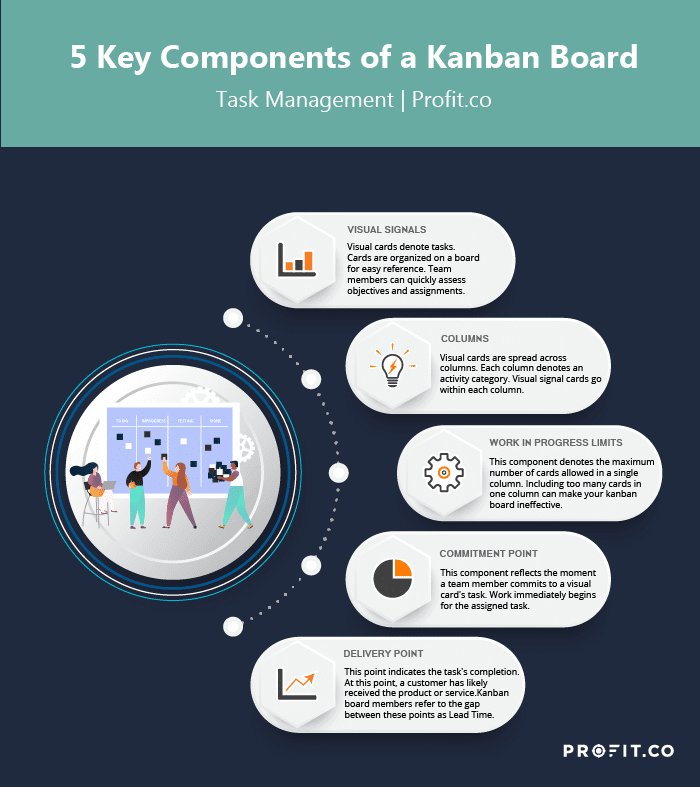Focus on being productive instead of busy.
What Is a Kanban Board?
A kanban board helps businesses and individuals visualize their workflow. You can organize each stage of an agile project and list steps for each stage. A kanban board gives you greater clarity on your workload. This clarity can help you optimize different stages of your agile project. A kanban board also keeps team members on the same page. A complex project with differing opinions can lead to confusion across the team. An agile project’s fast movement leaves little room for error. Greater clarity on the agile project leads to fewer roadblocks and enhanced productivity. Profit.co’s task management module provides fully transparent task management for you and your remote team. Get started for free on Profit.co today!Ready to start your OKR Journey for FREE?
Key Components of a Kanban Board

A kanban board comes with several components to boost efficiency for agile project management. Dan Anderson, the man who pioneered bringing the kanban method into the software services space, established five key components of every kanban board:
Visual Signals: Visual cards denote tasks. Cards get organized on a board for easy reference. Team members can quickly assess objectives and assignments. Columns: Visual cards get spread across columns. Each column denotes an activity category. Marketing activities go in one column, while product management activities go in another column. Visual signal cards go within each column. Work in Progress (WIP) Limits: This component denotes the maximum number of cards allowed in a single column. Including too many cards in one column makes your kanban board messy. If one column has too many cards, consider breaking it into two columns. WIP limits reveal workflow bottlenecks. You can spot opportunities to improve productivity. Commitment Point: This component reflects the moment a team member commits to a visual card’s task. Work immediately begins for the assigned task. Delivery Point: This point indicates the task’s completion. At this point, a customer has likely received the product or service. Kanban board members strive to transition from commitment point to delivery point quickly. Kanban board members refer to the gap between these points as Lead Time. They seek to lower Lead Time to complete tasks sooner. A kanban board with these five components will improve task management. You can track progress in real-time and enhance your company’s workflow. Kanban board members can communicate with each other along the way to reduce Lead Time.



